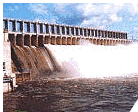From the Table of Contents:
Chapt 1 INTRODUCTION
Distribution of Ice
Climatic Effects of Ice
Impacts of Ice on Man
Man's Impacts on Ice
Fundamental Problems of Ice Engineering
River and Lake Ice
Characteristics of river and lake ice
Basic laws describing river and lake ice phenomena
History of Ice Engineering
Future of Ice Engineering
References
Chapt 2 ICE PHYSICS
Structure and Classification of Freshwater Ice
Crystal structure
Optical properties
Lake ice structure
River ice structure
Classification of freshwater ice
Density
Principles of the measurements
Results
Rheology of Polycrystalline Ice
Test methods
Experimental results under uniaxial loading
Rheological models for ice creep
Thermal properties
Specific heat
Latent heat of freezing and the process of melting
Thermal conductivity
Thermal diffusivity
Thermal admittance and conductive capacity
Mechanical properties
Strength
Elastic moduli
Fracture mechanics
References
Chapt 3 ICE MECHANICS
Rheology of Ice
Crystal structure
Rheological models
Model variables and parameters
Load-Generating Mechanisms
Thermal ice pressure
Wind and water drag
Changes in water level
Drift velocities
Ice Forces in Vertical Structures
Plastic limit analysis
Failure modes
Ice load codes
Ice Forces on Sloping Structures
Simple two-dimensional theory
Three-dimensional theory
Experimental data
Comparison of formulas
Quick Computations of Ice Forces
Vertical Ice Forces.
Vertical forces on cylinders
Vertical forces on walls
Causes of vertical ice movements
Techniques for reducing vertical forces
Buckling of Ice Sheets
Buckling analysis of beams on elastic foundations
Buckling analysis of plates on elastic foundations
Ice-Induced Vibrations
The oscillator model
Self-excited vibrations
Vibration frequencies
Periodic forcing of rigid structures
Periodic forcing of flexible structures
Stochastic vibrations
Bearing Capacity of Floating Ice Sheets
Source of bearing capacity
Characteristic length of a floating ice sheet
Kinds of loads
Prediction of creep failure
References
Chapt 4 THERMAL REGIME OF LAKES AND RIVERS
Variations of Thermal Regimes
Wind and gravity effects
Annual temperature variations
Minor heat sources
Lakes with through-flow
Large lakes
Surface Heat Exchange
Mechanisms of surface heat exchange
Radiation energy
Short-wave radiation
Solar radiation reaching the ground
Long-wave radiation
Reflection, emission and absorption of water, ice and
snow
Evaporative and convective heat transfer
Total heat exchange through the water surface
Ice Formation
Lake ice cover formation
River ice formation
Ice Cover Decay
Lake ice decay
River ice decay
|
|
Chapt 4 Con't
Man-Made Changes in Thermal Regimes
Long-term storage in river systems
Warm water release into rivers
References
Chapt 5 HYDRAULICS
Ice Nucleation in Water
Theory of ice nucleation
Ice appearance in natural water bodies
Forms of River Ice Covers
Frazil and anchor ice
Partial ice covers
Continuous ice covers
Frazil and Anchor Ice in Rivers and Lakes
Metamorphosis, growth and evolution of frazil
Models of frazil production and transport
Contribution of frazil to ice cover formation
Hanging dams
Anchor ice
Ice Cover Formation
Static ice formation
Dynamic ice formation
Lake ice formation
Aufeis
Hydraulic Resistance of Ice-Covered Channels
Hydraulic resistance effects due to ice covers
Estimating composite resistance
Field estimates of the roughness coefficient for ice covers
Estimating channel conveying capacity
Conclusion
Break-Up
River break-up processes
Lake break-up processes
Forecasting Ice Phenomena in Rivers and Lakes
Forecasting ice appearance and freeze-up
Forecasting ice growth and ice thickness
Forecasting break-up
References
Chapt 6 ICE MODELING
Laws of Similitude
Determining Model Ice Properties
Flexural strength
Elastic modulus
Compressive strength
Tensile strength
Shear strength
Kinetic friction coefficient
Density
Scaling Physical Models of Ice-Covered Rivers
Flow under a solid ice cover
Ice fragment accumulations
Break-up
Ship Modeling
Modeling Ice-Structure Interactions
References
Chapt 7 ICE CONTROL
Hydraulic Methods
Ice flushing
Ice sluicing
Ice control structures
Thermal Methods
Radiation modification
Air bubbling
Submerged pumps
Direct heating
Heating of trash racks
Warm water addition
Mechanical Methods
Blasting
Pneumatic devices
Jet cutting
Removal by equipment
Surface coatings
References
Chapt 8 REMOTE SENSING
Impulse Radar
Aerial Photography
Satellite Imagery
Skylab
NOAA and GOES
Landsat
Applications for ice engineering
Future satellite systems
References
Chapt 9 ICEBREAKERS
Design Requirements
Hull shape
Propulsion machinery
Hull structure
Intact stability
Modes of Icebreaking
Determining Power Requirements
Model Testing
Scaling laws
Model studies of hull characteristics
Novel Icehreaking Devices
Air-cushioned vehicles
Ice-cutting ships
The Alexbow
Other devices
References
APPENDIX A
INDEX
|




